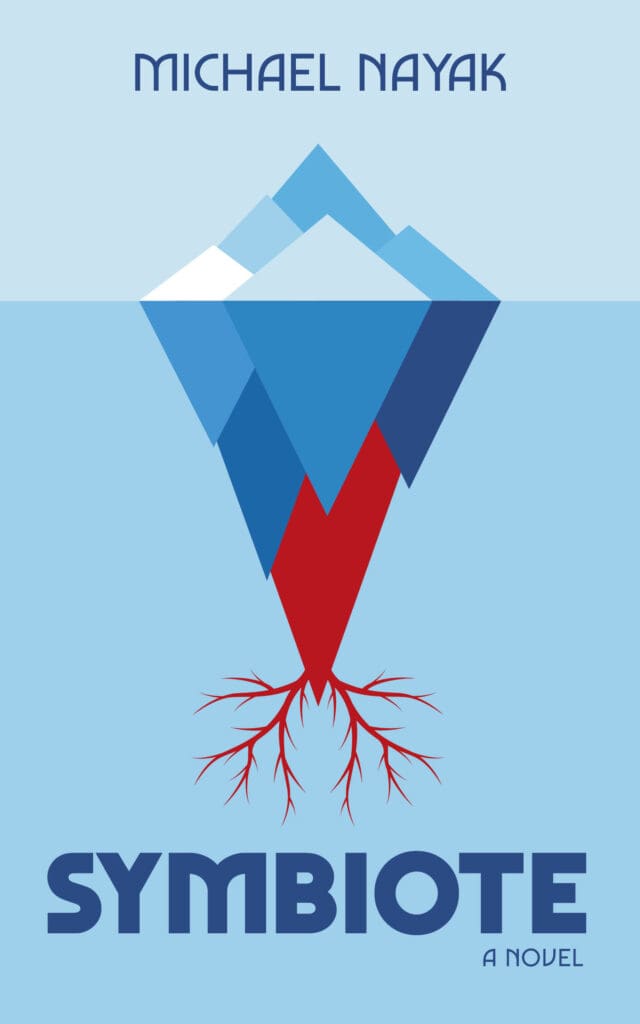Science fiction has centered on thinking about the great beyond, galaxies far away, but as NASA research suggests, the closest you can get to training for space is actually right here on Earth, at isolated locations like the South Pole, Antarctica. In this article I explore five analogies between life in space and life in Antarctica, and how such concepts are absorbed into Symbiote, a sci-fi/horror novel about the spread of a biological threat in a closed society.
Space, on Earth
A guest post by Michael Nayak
Science fiction often explores the vastness of space, thinking about the great beyond, delving into distant galaxies, and imagining a multitude of scenarios for alien and human life between the stars. I’ve loved reading stories in this vein, but sadly, reality doesn’t include faster-than-light starships (Star Trek/Star Wars), a Ring network of wormholes (The Expanse, James S. A. Corey), the Holtzmann effect (Dune, Frank Herbert), the Skip Drive (Old Man’s War, John Scalzi), or any other way to defeat the cosmic speed limit of light.
But we are (hurray!) preparing to push farther into our solar system, with humans in space as a central tenet of NASA’s Moon-to-Mars vision. Both NASA research and ESA research indicates that some of the most valuable training for space exploration occurs in isolated Earthly locations like Antarctica’s South Pole. Having been both a crewmember and resident at the Amundsen-Scott South Pole Station, a semifinalist for NASA’s astronaut program, and a career aerospace engineer, I’ve been fascinated by the parallels between life in space and life in Antarctica.
In that light, it strikes me that there are five analogies between life in space and life in Antarctica. In my upcoming sci-fi/horror novel Symbiote, published by Angry Robot Books, I’ve tried to intertwine these analogies to heighten the tension and horror of a biological threat in a secluded environment. Each of these are immersed into the cold of Antarctica, almost as a character in itself within Symbiote, which has been described as a cross between The Thing and 28 Days Later,with a dash of Alien (Grimdark Magazine).
1. Isolation and Confinement
Both astronauts and Antarctic researchers experience extreme isolation. They are confined to their habitats for the duration of their “deployments”. This seclusion, and limited interpersonal interaction, can lead to psychological stress, tensions between crewmembers, and of course, a heightened sense of vulnerability when something unexpected happens! In Symbiote, a group of scientists stationed at South Pole encounter an extremophilic symbiotic microbe that creates a deadly evolving hive mind with murderous intent. The novel pulls on the psychological thread of isolation as the characters grapple with both the external threat and their internal fears.
2. Harsh Environmental Conditions
The extreme cold of Antarctica mirrors the uninhabitable conditions of space. With more oxygen, of course! But both environments require specialized equipment and habitats to survive, and failure can be catastrophic. In Symbiote, the unforgiving Antarctic climate is both a physical and metaphorical barrier. The cold isolates the crew and intensifies the horrific effects of the spreading biological threat. The necessity to rely on technology for survival in such a hostile environment mirrors the dependence of astronauts on their spacecraft and suit systems.
3. Limited Resources and Self-Sufficiency
In both space missions and Antarctic expeditions, resupply opportunities are rare. To survive requires careful resource management and a crew trained to be self-sufficient – but also reliant on each other! This limitation becomes a critical plot point in Symbiote, as the characters must contend with the biological threat using only the resources at hand. It’s Antarctic winter, dark 24 hours a day, and rescue is impossible for months! The scarcity of supplies heightens the tension, as every decision carries significant weight, and mistakes can lead to dire consequences.
4. Team Dynamics and Interpersonal Relationships
The confined settings of space missions and Antarctic stations place immense pressure on even the best-trained teams. Interpersonal conflicts can jeopardize mission success, which is why NASA studies team interactions in Antarctica to benefit future long-duration space missions. In Symbiote, forty people are trapped in a tin-can station together, and within seventy-two hours, nearly a third of the crew is dead. That’s stressful! And that stress exacerbates existing tensions among the team. Hopping between the heads of both good and poor teammates, I’ve tried to explore how fear and paranoia can fracture even the best of relationships, endangering everyone.
5. Exposure to Unknown Biological Threats
Yes – both space and Antarctic environments pose the risk of encountering unknown biological entities! The crew of Apollo 11, first to land on the Moon, were quarantined by themselves for 21 days, just in case they had been exposed to unknown extraterrestrial microorganisms. Deep in sub-glacial Antarctic lakes, researchers have discovered extremophile microbes that can thrive even in total darkness, high pressures and icy cold, which becomes a plot point within Symbiote.
The novel centers on the spread of an extremophilic symbiotic microbe at the South Pole, which evolves into a deadly hive mind. In a way, this scenario mirrors initial concerns about Apollo astronauts bringing back non-Earthly pathogens from their lunar travels, and the challenges of studying them without endangering the crew or humanity.
These analogies between life in space and life in Antarctica fascinated me when writing the novel, so my thanks to FanFiAddict for giving me the opportunity to explore this prompt in a little more detail. If you enjoyed this content, you can find more information at the links below! I hope that Symbiote entertains, but also prompts reflection on the psychological and physical challenges faced by those who venture into Earth’s most remote frontiers, and beyond!

Contagion meets The Walking Dead in this new sci-fi thriller where a biological threat ravages scientists and military personnel at the South Pole.
As World War III rages, the scientists in Antarctica are thankful for the isolation – until a group of Chinese scientists arrive at the American research base. In their truck is a dead body, the first murder in Antarctica. The potential for a geopolitical firestorm is great, and, with no clear jurisdiction, the Americans don’t know what to do. But they soon realize the Chinese scientists have brought far more with them than the body…
Within seventy-two hours, thirteen others lie dead in the snow, murdered in acts of madness and superhuman strength.An extremophile parasite from the truck, triggered by severe cold, is spreading by touch. It is learning from them. Evolving. It triggers violent tendencies in the winter crew, and, more insidiously, the beginnings of a strange symbiotic telepathy.
Exhausted by suspicion and fear, with rescue impossible for months, the desperate crew members turn on each other. A small group of survivors try to resist the siren call of the growing hive mind and stay alive long enough to solve the mystery of the symbiotic microbe’s origins. But the symbiote is more than a disease – it is a biological weapon that can change the balance of power in a time of war.
The survivors cannot let anyone infected make it to the summer season, when planes will arrive to take them – and potentially the symbiote – back to civilization.
Pre-order here

Website: www.michaelnayak.com
Follow me on Twitter: https://twitter.com/intent/user?screen_name=mikeynayak
Sign up for my monthly newsletter: https://www.michaelnayak.com/contact
Goodreads: https://www.goodreads.com/author/show/14179535.Michael_Nayak




Leave a Reply